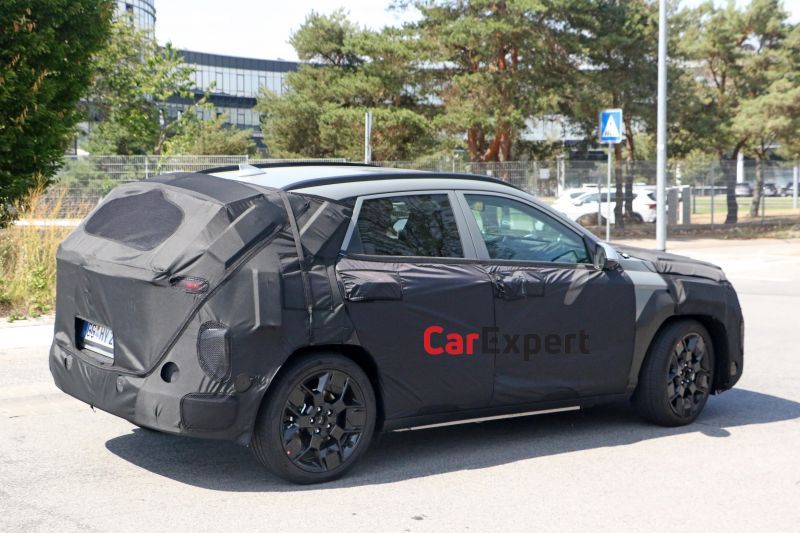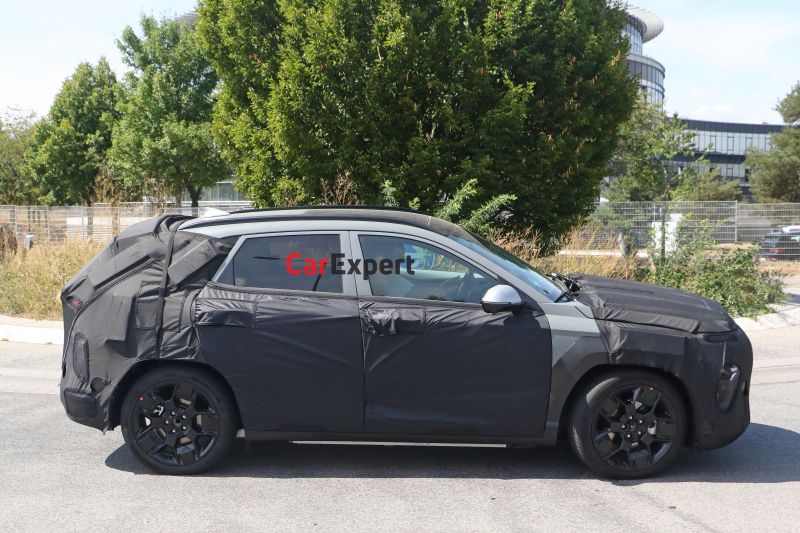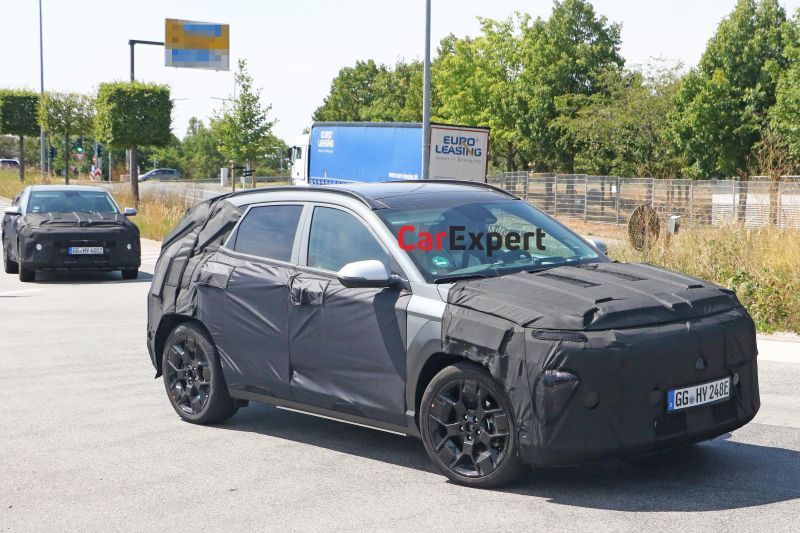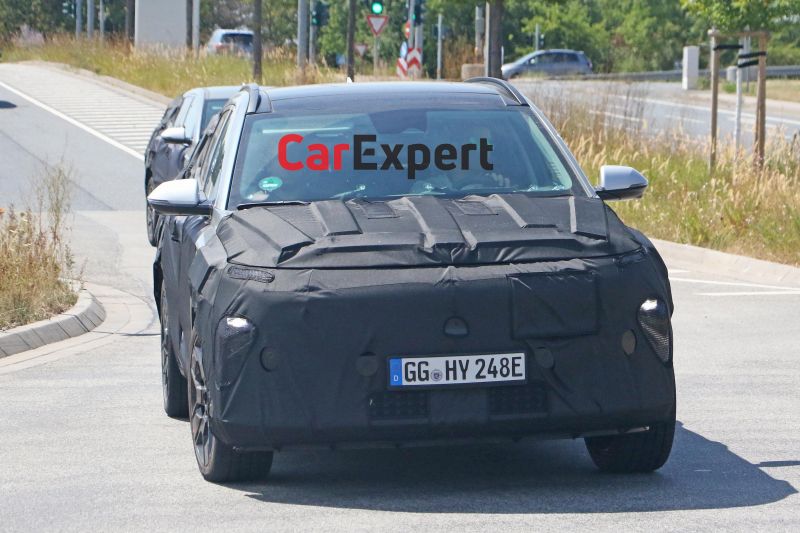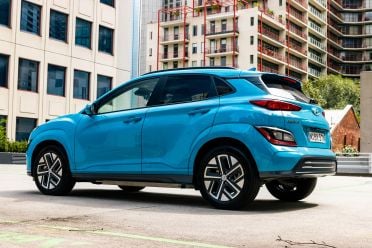The current Hyundai Kona Electric isn’t one of the most spacious EVs at its price point, but its replacement looks set to address that.
The next-generation Kona Electric has been spied testing, following its petrol and hybrid counterparts.
The entire Kona range is expected to be revealed in 2023, and the small SUV is expected to grow in size.
Codenamed SX2, the second-generation Kona – though still heavily camouflaged – looks to be larger than the current car and closer to its corporate cousin, the Kia Seltos, in external dimensions.
That would help give some more breathing room to smaller Hyundai SUVs like the European-market, i20-based Bayon in Europe and the Venue in markets like Australia and North America.
The current Kona measures between 4205mm and 4215mm long, 1800mm wide and 1550-1560mm tall on a 2600mm wheelbase.
That’s around 160-200mm shorter than a Kia Niro or Seltos.
It’s unclear whether there will be any powertrain changes for the Kona Electric.
The current model is offered in either Standard Range or Extended Range variants in Australia, with the former using a 39.2kWh battery pack and an electric motor with 100kW of power and 395Nm of torque and the latter upgrading to a 64kWh battery and 150kW/395Nm electric motor.
Its in-house rival, the new second-generation Kia Niro, features a 64.8kWh battery and 150kW of power, though its electric motor has seen a significant drop in torque to 255Nm.
Although it’s partially covered, we know the new Kona will receive an evolution of the current model’s split headlight design with the main headlight unit mounted lower on the front fascia than the daytime running lights.
The first-generation Kona, which debuted locally in 2017, was the first Hyundai vehicle to feature the split headlight design. This design element has since rolled out to other Hyundai offerings such as the Staria, Palisade, Santa Fe, Tucson and Venue.
Our spy photographers recently snapped a few interior photos of a different Kona prototype, revealing a dashboard that appears to take inspiration from the Ioniq 5.
Rumours have suggested the new Kona will not only replace the current car, but also the i30 hatchback in some markets.
Hyundai has already discontinued the i30 hatchback in South Korea and the U.S. due to poor sales. Its newer sedan counterpart, also known as the Elantra and Avante, is still on sale in both of these markets.
The Kona Electric is expected to remain Hyundai’s entry-level EV for the time being, though Hyundai Motor Europe’s marketing chief Andreas-Christoph Hofmann told Automotive News Europe last month the company is working on an EV city car.
He didn’t confirm when such a model would launch, but acknowledged the target price of an EV city car is €20,000 (A$29,243).
Such a model would tackle the Volkswagen Group’s upcoming MEB Entry triplets, including the production version of the Cupra UrbanRebel.
The brand’s styling head, Simon Loasby, also confirmed to CarExpert the company is working on new small EVs.
“Of course” they’re coming, according to Mr Loasby. “Watch this space,” he said.
“We’re working on a full bandwidth of Ioniq models which will include Ioniq 3 and Ioniq 4, as long as we can adhere to the three design pillars.”
Those design pillars are: “the biggest wheelbase in its segment, sustainability, and our Parametric Pixels that form variations of our signature design motif for our Ioniq range”.
All previously announced Ioniq-branded models differ from the Kona Electric in featuring the dedicated E-GMP electric vehicle architecture, whereas the Kona and discontinued Hyundai Ioniq (confusing we know – Ed) are based on combustion-powered vehicles.
The Kona Electric was Australia’s second best-selling EV in the first half of 2022 with 570 sales, benefiting from a lack of supply for the MG ZS EV.
That put it behind the all-conquering Tesla Model 3 (4653 sales) but ahead of rivals like the Nissan Leaf (226 sales), Kia Niro EV (127 sales) and Hyundai’s own Ioniq Electric hatchback (385 sales).
The wider Kona range, to the end of July, is sitting in third place in sales in the small SUV segment at 7572 units.
That puts it behind only the Mazda CX-30 (9520 sales) and MG ZS (11,609 sales).
MORE: Everything Hyundai Kona


